https://www.youtube.com/watch?v=V_LIMe8jQEo
Paint Your Popcorn Ceiling (With THIS Tool)
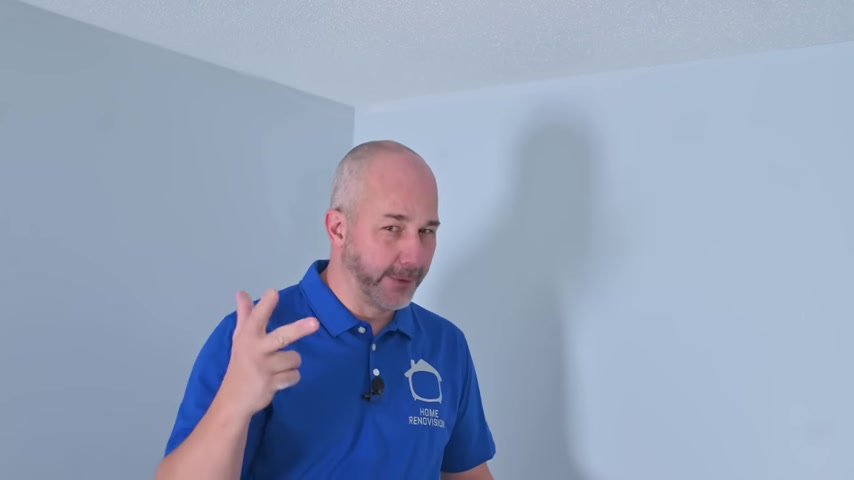
Today , I'm going to be showing you guys how to paint your textured ceilings .
And there's two different conditions for textured ceilings , whether it's been painted before or not .
Both cases , there's similar procedures and I've got a trick .
I'm going to show you right now .
Whenever you're doing with textured ceiling , the corners are real difficult because if you're gonna paint the ceiling , inevitably you have to paint the wall , there's just no way to get around that right .
So take your finger and just clean any texture out of that edge .
And then what I'm gonna suggest grab some of this fast dry cowing is 20 minutes , put it in your gun and then just put a really thin bead right into that corner .
I'll tell you why you wiped that in .
Now , I've got an edge that's smooth and clean .
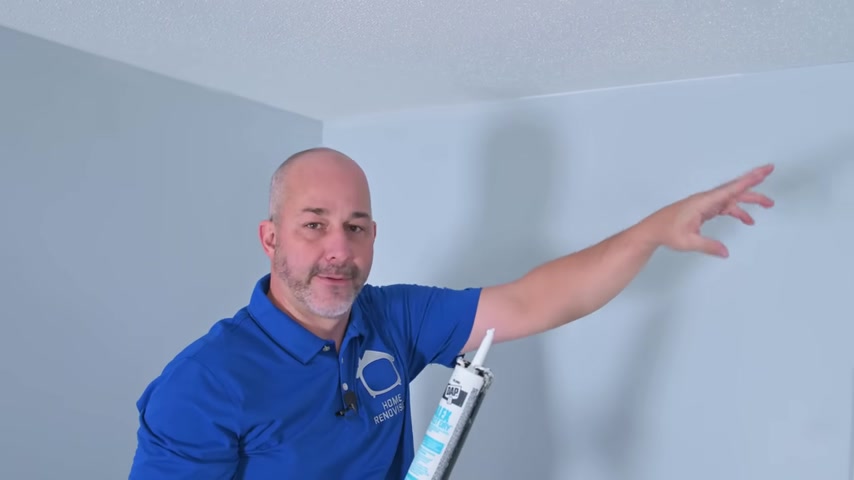
So when I'm done painting my ceiling , I've got somewhere that I can bring my wall paint to , that's a nice clean , straight edge and I can cut a straight line if I don't do that , that everywhere where there's texture caught in all the corners , your brush is gonna be bouncing off of it and your line always looks like junk .
This is the system .
And if you have a pre painted ceiling , you just grab a putty knife and you can just run it up against the wall like that and scratch out any of the extra texture that's in the way .
Ok , then you can use the cocking .
Now , let's get on to painting because we're gonna show you some tips and tricks today .
So that if you don't have a painted ceiling , there are a lot of people that like to use a roller technique and it flattens out on the ceiling .
So we're gonna demonstrate how not to do it .
And then I'm gonna show you the right tools so that you can do it properly .
Get a great result .
So I know it's a textured ceiling and it's , if you check this , it comes off pretty easily , right ?
So you wanna be careful , get your paint on your brush .
We're gonna use a very flat ceiling paint with no acrylic and that is actually for two reasons .
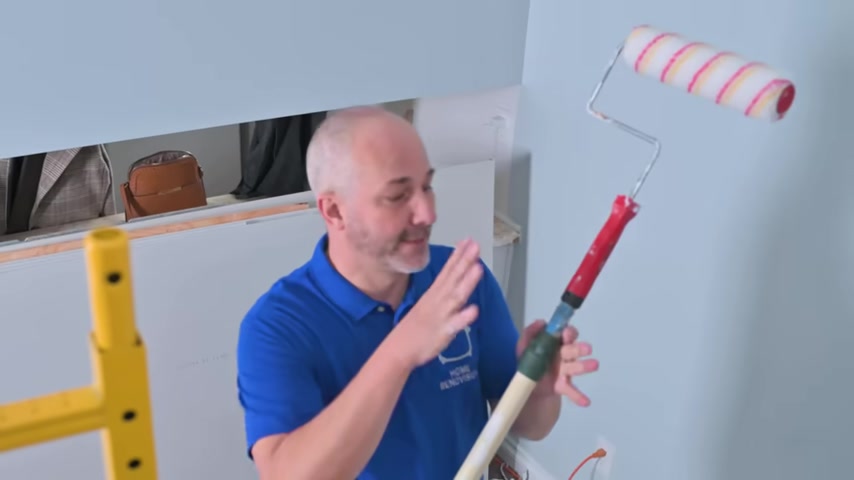
One , if you don't use any acrylic and you want to remove it at a later date , you still can .
It's still possible .
Ok ?
If you use any acrylic in the paint , you're in trouble , you're gonna have to belt sand it off .
It's a brand new world , but you're going , gonna paint this surface here last inch and that's about it .
Ok ?
Just want to get rid of any previous wall color that might be riding a little bit too high and then we're gonna use our roller right up to about a half an inch from the edge of the ceiling to finish our look .
But that's the technique .
Don't go crazy or you'll just end up wiping all this stipple off and you'll have a flat section , just go up against that cocking line and you're just a couple of passes and that's it .
So , this is the setup .
I've got a cage .
I've got a regular roller .
This is a microfiber 15 millimeter or half inch roller .
If you're down in the States , I've got it on my extension pole and now I'm just gonna load up , the roller can take a few minutes .
Ok .
You want to keep going until you don't see any of the color on that microfiber showing through .
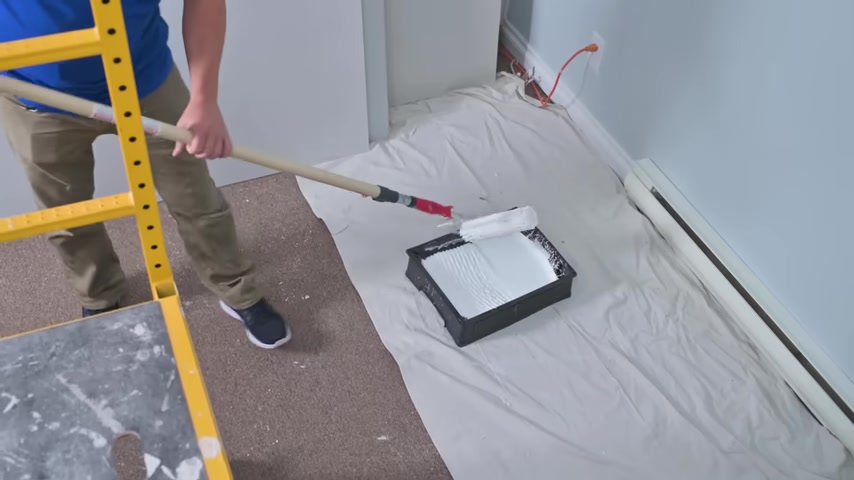
That's how , you know , the paint is all the way into the back of the bristle .
All right .
Now I'm loaded up .
Let's show you what other everybody else does out there .
They'll go up here like this and they'll just start painting .
Oh , that looks nice , doesn't it ?
Ok .
And they go , wow , that really soaks up a lot of paint .
All right .
And it does this medium texture , really soaks up a lot of paint .
So they'll come over here , they'll do another row right next to it .
Oh , and then , wow , I'm already out of paint .
Do one more row and then you'll see why this is the wrong way to go about this .
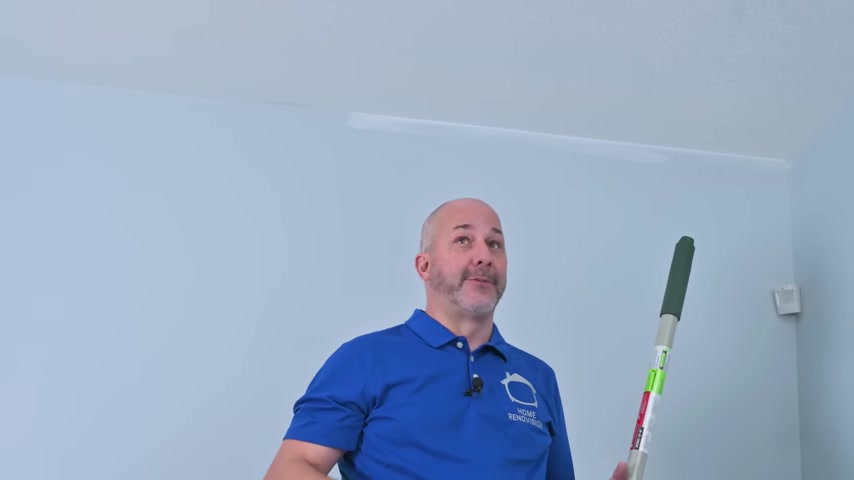
All right , where I'm standing , I've got two distinct lines here that are flattened out with the texture .
I remember I did a project for somebody and I painted their stipple ceiling .
I was young years and years ago and I did the same roller technique .
A few months later , I got a call and it was in February , the sun's low in the sky and it was coming through the windows and you could see all the lines from where I rolled it .
Ok .
And they were really quite upset because it looked horrible for about two or three months a year .
This is where we learn .
Trust me on this .
If you've had this experience , get in the comments section , let me know what I'm gonna show you right now is the solution .
It's the proper technique and the proper roller .
So you don't get this problem because if you are out there and you're trying to make a living and you're painting people's ceilings like this and you get that call back , the only solution now is to take the stipple off and respray the ceiling that hurts .
Ok .
Let's get on with it .
That's what we're gonna use for this and it works for any kind of texture , whether it's tipple or stalactite , it works great .
It's called a split foam roller .
Now , these are actually on the shelf .
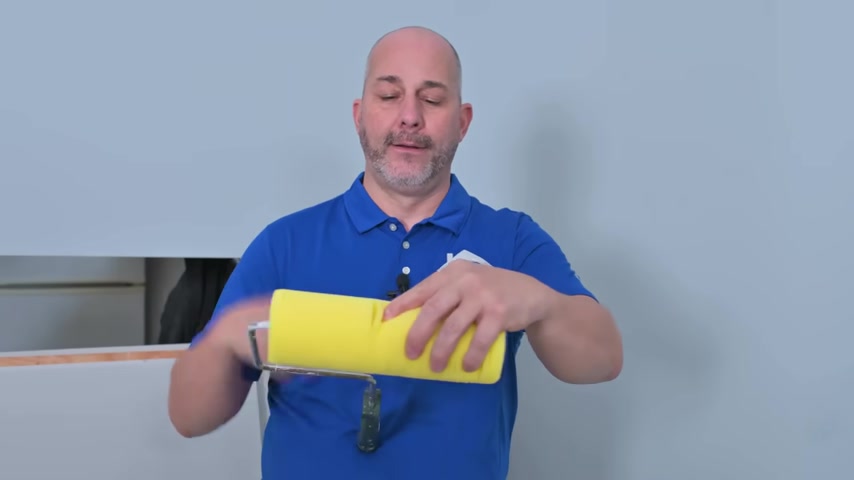
You're looking at Home Depot on your lows probably every other building center because a long time ago , somebody figured out that if they just take a foam roller and they slice it right .
And so about 30 different rows , then as the texture goes by , it can shape itself around the texture and won't pick it up and take it off the ceiling and it won't put all that pressure that goes through the cage to this corner and it won't translate it through the , the All right .
Now , we're gonna load this one up and a quick word of warning .
This actually is a lot messier .
It tends to spray around .
So extend your stick and try to stay out of that way because it's foam .
You don't want to use much pressure at all .
Ok ?
Because as soon as you start using pressure , then the roller starts to drip .
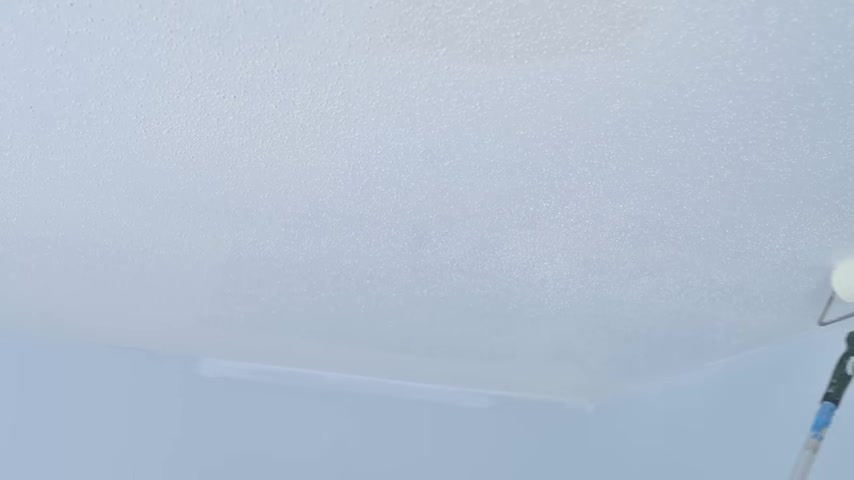
There we go .
Serious .
Nice and gentle and you'll see like all those little mini streaks that's actually excess paint .
What ends up happening is the drywall in the Sipple will soak it all up as it's drying .
Here we go .
No , we're gonna do one more pass and I'm gonna show you how well it covers that yellow from the Ben Zinser .
Ok .
Here we are nice and gentle and the yellow is now gone .
And if you missed it , we did a video we showed you how to do repair on this texture .
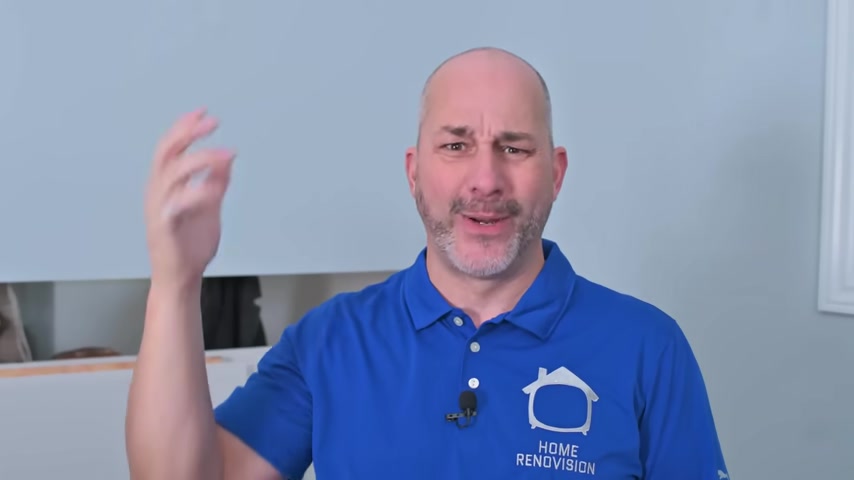
So we use a stain sealer from Benzer on the yellow marks in the ceiling there , which creates a yellow mark , but at least it seals up and covers all the rest .
And we also did a patch and repair .
We're gonna go paint that right now .
It should be dry .
This area here is actually was a great big square in the ceiling that was cut away and patched and then we rolled on a texture and tried to blend it into the rest of the ceiling .
We're going to see how invisible that is after painting .
Be careful with these roll the foam roller .
Don't push too hard .
Yeah , that makes a mess .
Nice , gentle pressure .
Because if you push too hard , look at that mark is gonna stay in the ceiling and just flatten out the space and there you have it that actually worked out pretty good .
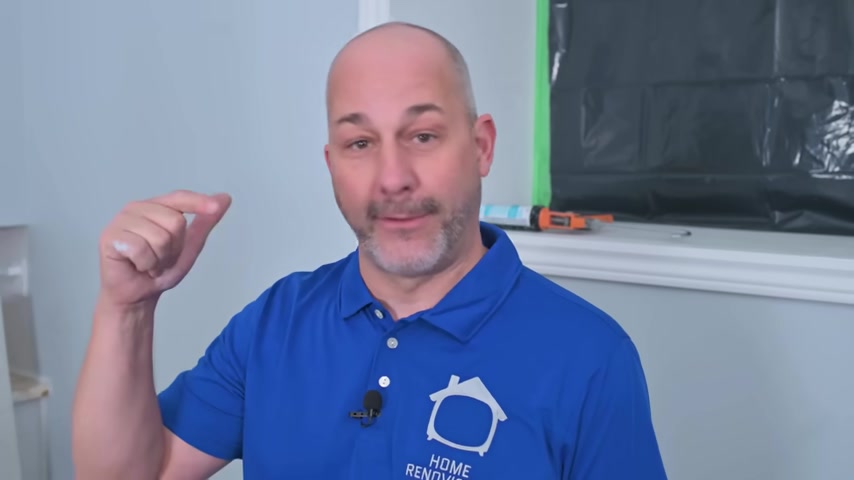
So if you need to see the techniques for how to fix your ceiling before you paint it , then you can check out the video over here .
Don't forget to like this video .
Subscribe to the channel for quick tutorials and how to solve your everyday life problems .
We'll see you in another video soon .
Cheers .
Are you looking for a way to reach a wider audience and get more views on your videos?
Our innovative video to text transcribing service can help you do just that.
We provide accurate transcriptions of your videos along with visual content that will help you attract new viewers and keep them engaged. Plus, our data analytics and ad campaign tools can help you monetize your content and maximize your revenue.
Let's partner up and take your video content to the next level!
Contact us today to learn more.